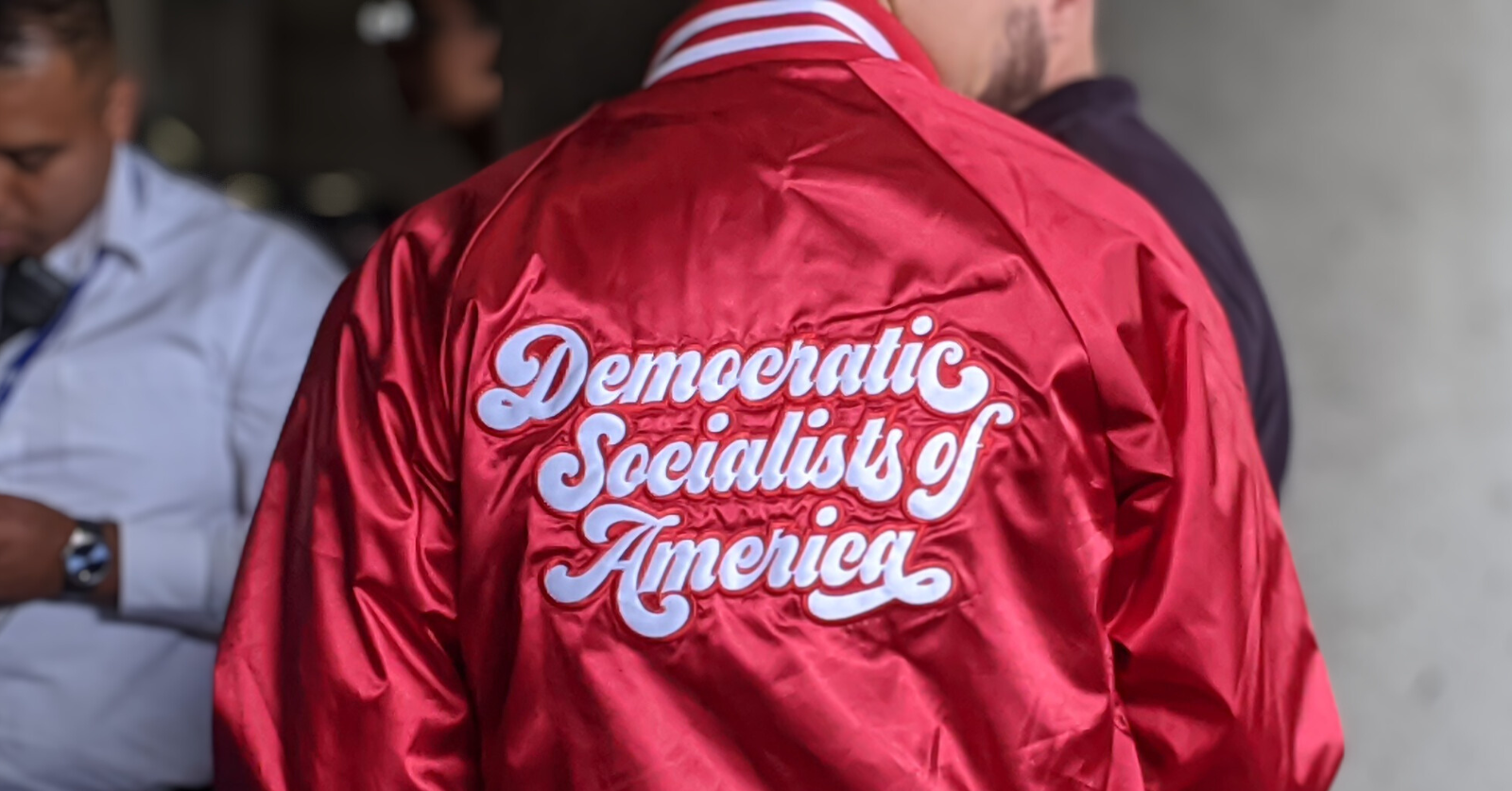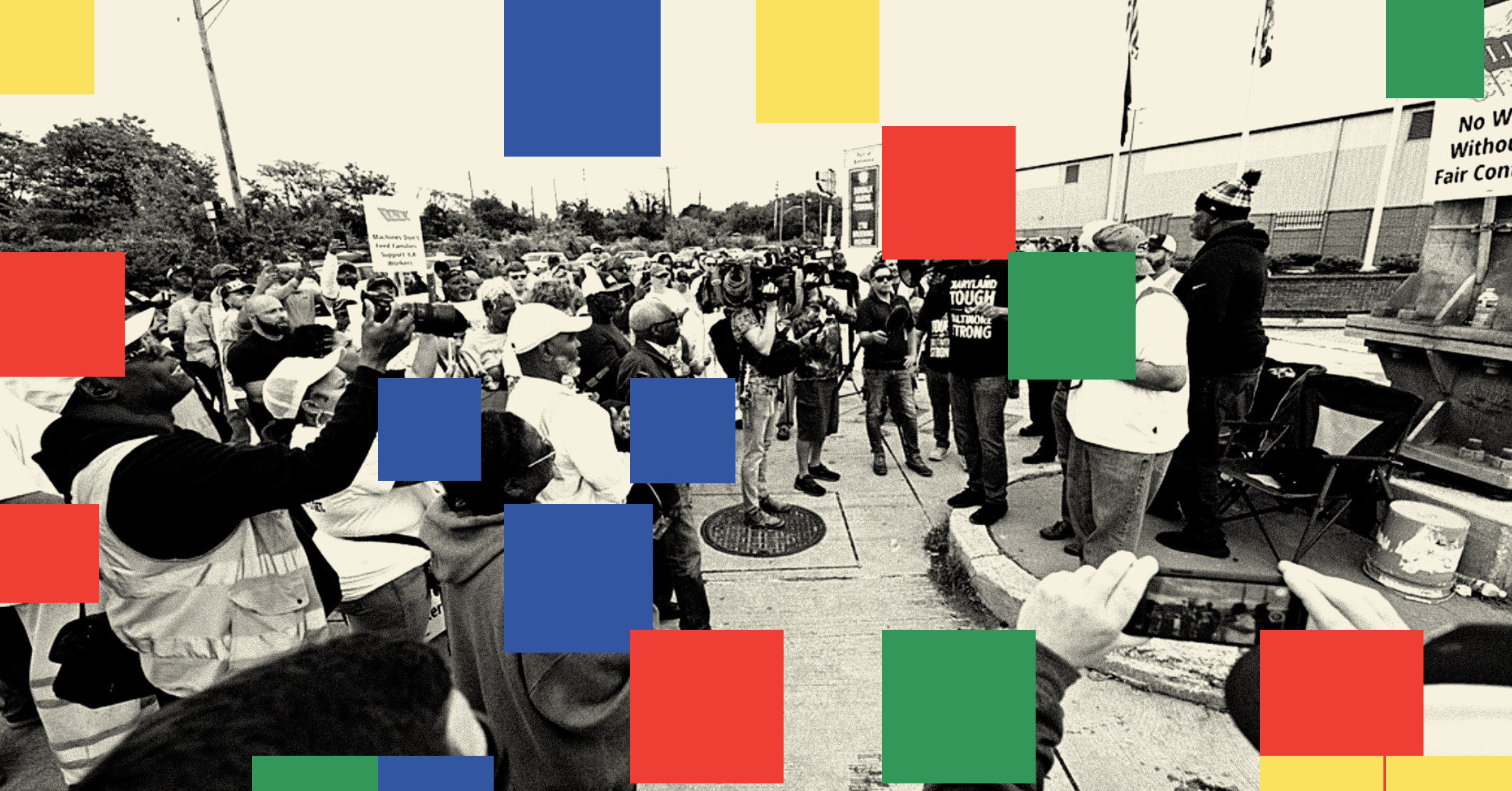At DSA’s most recent national convention, delegates voted overwhelmingly to adopt a series of amendments and changes to the National Electoral Committee, reflecting a growing national consensus that DSA should work towards separating DSA’s electoral identity from that of the Democratic Party. We should be clear-eyed about this: third parties in the US have struggled to break through at the national level, and even successful local formations have often been unable to grow a foothold beyond individual insurgent candidates. We should accept that national DSA and local chapters, in most cases, are not ready to form their own ballot line and will need to continue to run candidates on the Democratic ballot line for years to come.
Now is a key inflection point for DSA’s electoral strategy and communications. We look to the future and weigh our future goals with our need to be effective in the present. I have written previously about how shared and distinct branding is essential for DSA electoral campaigns. To build DSA as a proto-party formation, or at the minimum be a more effective electoral operation in general, we should work to clearly differentiate our agenda from that of centrist and right-wing Democrats in our communications, politics, and candidates. President Joe Biden’s low approval ratings at time of writing, winter 2023, especially among young people, underlines a large-scale national dissatisfaction with the Democratic Party and with politics-as-usual that DSA and our candidates should leverage to promote our organization and politics as a positive socialist alternative.
To build mass working-class identification with DSA candidates and with our socialist electoral and political project we should continue our evolution and professionalization of comms work, including explicit self-identification as a socialist organization with socialist candidates. However, votes and voter loyalty, at the scale we need to achieve socialism through an electoral program won’t come down to whether an individual campaign puts a DSA logo on a campaign flier or uses the word “socialism” in a stump speech. Electoral communications act as a shorthand, a backstory, and a narrative undergirding political goals and strategies that audiences associate with a candidate or movement with clear and consistent politics and standards. NYC-DSA has realized many aspects of this and over several years and electoral cycles of mixed success built out a thorough and democratic endorsement process involving detailed questionnaires, research work, and democratic forums and votes. Another electoral force in New York, the Working Families Party, has seemingly realized the same. They are also taking notable steps to build their party identity that NYC-DSA has not yet embraced, as seen in their recent NYS candidate screening questionnaire. DSA should take note and reflect on the implications of that as we begin work in 2024 to act like an independent party.
The Working Families Party
The Working Families Party, aka the WFP, is a New York-based national pseudo-party organization born in the 90s from a coalition of labor unions and progressive activists hoping to pull the Democratic party leftwards, a noble goal in the era of Clinton neoliberalism and a political climate in New York where Republicans could and did elect governors and mayors. In that union of left-wing politics and labor power you can see echoes of some of DSA’s current work.
The WFP is definitively not a socialist organization and after an Andrew Cuomo-forced exodus of major labor union members, it has arguably moved to become more of a progressive advocacy organization than the working class movement its name alludes to. In many ways, though often aligned in coalition with DSA, it is operationally the antithesis of DSA, focusing on progressive over socialist political goals, raising funds from wealthy, influential donors and interest groups rather than its own members, and preferring an opaque and top-down candidate endorsement process.
Having said that, the WFP is experimenting with some electoral tactics that DSA ought to learn from. WFP’s New York State chapter recently published an open questionnaire recruiting and screening potential WFP electoral candidates for upcoming New York State elections. Among many policy questions, two specific questions ask candidates about differentiating themselves and WFP from the Democratic Party.
The section “Strengthening the Movement” asks “Please tell us in which of the following ways you are willing to help build the working families party?” with the following options selectable as checkboxes:
- I will personally meet with Working Families Party members, staff, leaders, and affiliated organizations when requested.
- I will participate in virtual town halls and online meetings with NYWFP members.
- I will encourage my supporters to join the NYWFP list-serve and join a local chapter.
- I will support NYWFP’s fundraising efforts, including sharing donor relationships.
- I will list the NYFWP endorsement (and logo when appropriate) in campaign communications.
- I will publicly describe myself as a Working Families Democrat, Working Families Party-endorsed candidate and/or Working Families Party member.
These questions are explicitly screening for candidates who will work closely with the WFP’s infrastructure, asking candidates to pledge to work to move their supporters to become WFP chapter members and join fundraising efforts.
Another question informs potential electoral candidates that “A NYWFP champion proudly identifies with the Party and works with us to bring people activated by the campaign into the party” and requires an explanation of “How will you help bring your volunteers and base into the NYWFP during and after the campaign? How will your campaign brand and narrative identify with the NYWFP?”
These questions explicitly ask candidates to identify themselves in writing, graphic design, and branding with the WFP and as WFP candidates separate from the Democratic Party, and to work to build a movement identity with existing, non-WFP supporters. DSA activists have sometimes been hesitant to ask the same of our candidates, but we shouldn’t be.
As well as these questions aimed at party-building, WFP’s questionnaire asks potential candidates to educate themselves on WFP’s policy and legislative objectives via hyper-links to external resources, asking candidates to pledge to support WFP’s efforts in support of specific pieces of legislation through 50+ specific policy questions.
This party-focused, independent approach is seemingly at odds with an organization explicitly founded to merely push the Democratic party left and to be a party in name only, one that often uses tiered “paper” endorsements.
It seems clear however that in facing the recent challenges to their ballot-line created by their former antagonist, former New York State Governor Andrew Cuomo, the WFP has realized that in order to survive as an organization in their home state, and to advance their politics, long-term they will need candidates and voters to recognize them as distinct from the Democratic Party, both in their branding and politics, and with the goal of voters identifying with their project, supporting them as an independent organization or party.
They’ve rolled out this approach in their campaigns to promote their identity as a separate party and ask registered Democrats to vote on the WFP ballot line, which typically is a “fusion line” containing the same candidate as the Democratic Party line. This is often used by voters to show dissatisfaction with the Democratic Party, to build identification with the WFP, and to maintain the WFP as a ballot force. The latter is especially important, as in New York having a ballot line allows groups to spend practically unlimited sums on their candidates.
WFP’s moves in this direction are clearly informed by the feeling that identification with the party and organization will build the strength of their organization, ensure the safety of their independent ballot line, and allow for the future possibility of development of the organization as its own party structure. Building an identity separate from the Democrats will continue to protect the value of WFP’s electoral endorsement in the future, as voters will associate WFP candidates with a clear set of politics and expectations regardless of individual victories, ensuring a lasting movement, and helping build the loyalty of a WFP voter base.
Looking to the Future
In 2024, DSA’s electoral future looks bright. The 2023 National Convention tasked us to transform and expand the work of the National Electoral Committee (now Commission) and the “Act Like an Independent Party” amendment tasked the Commission and DSA chapters with building electoral campaigns that are more aggressively distinct from the Democratic Party.
The WFP precedent is instructive as we in DSA take our next steps to act like an independent party. DSA is the largest socialist organization in the United States, funded by members, staffed by volunteers, and setting policy and strategy through democratic, bottom-up, deliberative member-led democracy. If the WFP, a progressive top-down non-profit with better branding success than DSA, but much less at building a mass movement, can ask its members and candidates to act like an independent party, DSA can too.




